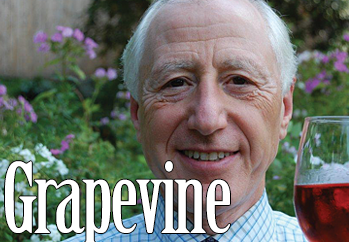Celebrating The Holidays With Unique Sparkling Wines
Opinion Advocates for ideas and draws conclusions based on the author/producer’s interpretation of facts and data.
 It is the height of the celebratory season. Whether at a house party or restaurant, as the host or a guest, with a large group or in an intimate couple setting, many Americans tend to include a bit of alcoholic refreshment in their social interactions (which should always be in moderation and drunk responsibly).
It is the height of the celebratory season. Whether at a house party or restaurant, as the host or a guest, with a large group or in an intimate couple setting, many Americans tend to include a bit of alcoholic refreshment in their social interactions (which should always be in moderation and drunk responsibly).
The natural inclination of a number of consumers is to gravitate to beer (from large or microbreweries), but others are slaking their thirst with wine. And the choices seem endless: from whites to rosés to reds.
For me, there is another wine category of which I am a strong advocate: sparkling wine.
Sparkling wines are one of the most versatile. Their fresh, bright and crisp characteristics highlight the acidity or the creaminess of many foods while the effervescence cuts through the fattiest of foods. They are equally suited for such food extremes as a lemon tart or creamy French brie.
But which sparklers to choose from? Champagnes have been a traditional choice for centuries. But in the last 20 years, sparkling wines from other regions and countries have gained a strong foothold in the marketplace.
The current market reflects the growing popularity of alternative sparkling wines. Last year, overall sales increased by 7 percent, with Prosecco fueling much of the growth while sales of Champagne declined. Clearly, Prosecco seems to be the sparkler of choice for many Americans. Its soft style, medium carbonation and pleasant aromas all contribute to its popularity. And at an average price well under $20, it fits nicely into many consumers’ affordability range.
In my opinion, and to my palate, these same attributes are drawbacks to this type of sparkling wine. There are other choices that offer more favorable aromas, taste and vivacity. These include French Cremant, Italian Lambrusco, American sparkling wine and Spanish Cava.
Of all of these choices, I generally favor Cava over other sparkling wines in the under-$20 price range. My rationale? Let me first focus on the broad differences in the composition and production of sparkling wines.
First is the grapes. Pinot Noir, Chardonnay and Pinot Meunier dominate worldwide production. However, in Italy, the alternative grape is Glera and the wine is Prosecco. In Spain, the grapes for Cava are those indigenous to the Catalonia region.
Second, there are several methods of producing sparkling wines that influence the style of the end product. The most common method is to introduce natural yeasts in individual bottles, commonly referred to as “Méthode Champenoise.” A single bottle may contain up to 50 million bubbles; hence, the frenzy of froth when poured into a glass. This method results in the most complex and refined wines. Champagne and Cava are produced in this manner.
In the “Charmat” method, natural yeasts are introduced in tanks rather than individual bottles. Prosecco is produced in this manner. These wines tend to be a bit lighter and creamier with large and significantly fewer bubbles.
Third, and least desirable, is the direct injection of carbon dioxide into tanks of wine (think carbonated soft drinks).
By adopting the same process as the French for producing their bubbly, Cava winemakers are known for the sophisticated style of their wine. What makes Cava unique among all sparkling wines is its combination of grape varieties, grown in Spain since the 19th century: Macabeo, Parellada and Xarel-lo. Try pronouncing these names after a glass or two of Cava. (OK, let’s try it: mah-kah-BEH-oh, Par-eh-LYAH-duh and Sah-REHL-loh.)
It is the masterful crafting and blending of these grapes that emphasize the individual characteristics of each variety and creates an end result that is greater than the sum of its parts. The Macabeo offers fragrant floral aromas, the Parellada offers a creamy mouth-feel and fruity flavors of citrus and apples and the Xarel-lo offers ripeness, full body, acid and alcohol. What comes through the bubbles are intoxicating aromas and flavors with toasty, creamy notes, sure to please discriminating palates.
When planning your next get-together, ask your wine merchant to recommend several Cavas. A fresh new experience awaits you.
Nick Antonaccio is a 45-year Pleasantville resident. For over 25 years, he has conducted wine tastings and lectures. Nick is a member and program director of the Wine Media Guild of wine journalists. He also offers personalized wine tastings. Nick’s credo: continuous experimenting results in instinctive behavior. You can reach him at nantonaccio@theexaminernews.com.
